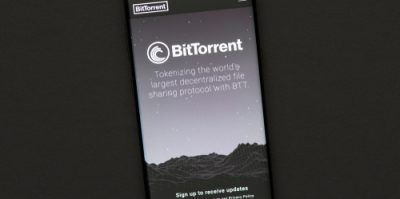
Compared to some of the other activities that you can take part on the internet, torrenting is perhaps the one with the most risk.
Nevertheless, no one can argue with the fact that torrenting is still pretty much the most efficient and reliable method of transferring large amounts of data.
Our research is clear:
Millions of people on the internet still make use of torrenting activities each and every single day of a given month.
Now, the thing about torrenting is that you don’t need a huge number of software applications or even hardware to get started with torrenting.
However, the main problem with torrenting is the stigma.
Torrent users get a bad rap to the extent that the environment becomes toxic.
And for beginner users, the experience can be overwhelming.
Therefore, to help all such users, we have written this guide on how to torrent in a safe manner.
In this guide, we will address the most important issues and terms that new torrent users should know if they want to get their hands dirty with torrenting and subsequent downloading.
We will also talk a little bit about fake torrent sites and files so that beginner torrent users stay away from such problems from the start.
Also, don’t forget all the DMCA notices that different torrent users are not receiving for one reason or another.
Governments all over the world are coming under an increasing amount of pressure from copyright holder groups to crackdown on torrent downloading.
We recommend that you make use of a VPN service in order to protect against DMCA notices among many other things.
Click here to read more about the best VPN service providers in the world.
And click here if you specifically want to read more about the best VPNs for torrenting.
Grab some snacks and get ready for a knowledge journey you will likely not forget anytime soon.
Table of Contents
What are torrent files and what is torrenting?
It would be best if you simply thought of a torrent file as a pointer file.
This pointer file references to the original uploaded file that a multiple number of torrent users share.
Such a torrent file can and does contain a ton of meta-information about the digital contents of the file.
It can range from audio content of all types along with movies and video games.
Using a torrent client you can download such torrent files.
If you want to go a bit more technical then know that a torrent file is simply a serverless file.
It comes into existence via the file-sharing protocol we all know as BitTorrent.
This protocol makes use of many URLs which belong to a multiple number of torrent trackers in order to retrieve not just the chunks of the torrent file (which is important for seeding purposes) but also to get the list of peers.
You might find this hard to believe but there is not much else you need to know about things such as torrent, torrent files, and torrent clients.
With that out of the way, let’s talk a bit about what does torrenting mean.
In simpler terms, torrenting happens when a user downloads some torrent files with the help of a Bittorrent protocol and/or a (decent) torrent client.
What we need you to understand is that a torrent user never gets to download the whole of a given file from a centralized server.
Why?
Because there is no centralized server that contains the whole of the file.
Instead of that, the torrent user has to download the given torrent file from a flew of online peers who make up the whole torrent swarm.
We agree.
This is all a bit overwhelming for you.
But that will only hold true in the beginning.
You do not need to know all the technical details in order to start torrenting.
In fact, modern Bittorrent protocol and torrent clients make it fairly easy for everyone to start torrenting.
The actual process is not only short but also fast.
What about torrent metadata? What is it?
As mentioned before, any given torrent file is filled with a ton of meta information.
The meta-information is related to the content that the torrent file holds.
You usually have to download the torrent file in order to download it via the previously mentioned peer-to-peer file-sharing BitTorrent protocol.
Let’s talk a bit more about the most important information that exists in any given torrent file’s meta information part.
- Size of the given file
- Subdirectory and file names
- Hash list
- The actual name of the directory and torrent file
- The complete list of available torrent trackers and the URLs associated with them.
The process goes something like this.
Whenever you wish to download your chosen torrent file you have to use your torrent client to connect to various different torrent trackers.
The torrent client will fetch the complete list of peers.
Peers are simply other torrent users who are trying to download the same thing as you are.
When that happens your download will begin automatically.
How do torrent files work?
Well, as mentioned before, the people behind torrent files have designed these files to be completely server-free.
Hence, when a user wants to download a given torrent file, the process of downloading happens in a very decentralized manner.
In other words, a multiple number of peers downloading the same torrent file form a swarm and that increases efficiency.
If a given user wants to download the complete torrent file, the data for the file has to be fetched from the multiple number of torrent peers.
Once a user has managed to download the complete file, the user is free to either disconnect and delete the file from his/her computer after consuming the content or become a seed and provide other torrent users the opportunity to download the same torrent file.
Generally speaking, seeding has become a bit of a norm in the torrenting community.
How to torrent quickly?
Believe us when we tell you that downloading a torrent file is by no means a big deal.
All you need to have are a couple of applications and you are more or less good to get going.
Now, the first piece of software that you must have is a reputable and working Bittorrent client.
Without a Bittorrent client, you cannot download any torrent files.
With one, you can download anything you want.
The market currently offers a good number of Bittorrent compatible and fast clients.
You are free to try them out one by one and then select the one that fulfills your needs the best.
Currently, the most reputed torrent clients are,
- Tixati
- uTorrent
- Deluge
Of course, you can check other torrent clients as well.
We have already mentioned that torrenting comes with a certain element of risk.
If you want to make sure that you do not end up losing your data or getting your machine compromised you should definitely make use of a torrent VPN.
A VPN that is good for torrenting will not only make you completely anonymous but will also provide you with the ultimate form of security.
Bittorrent file sharing: How does it work?
If you have never downloaded anything via a torrent client before you must have probably downloaded your files via the conventional way.
In the conventional way, you have files which are present on single servers.
These servers are based in various different locations around the world.
Bittorrent file-sharing procedures are a bit different from what you are used to.
As alluded to in a previous section as well, the mechanism behind torrents and torrent downloading revolves around concepts such as tracking and swarming.
Torrent files, unlike regular downloadable files, are essentially split into a large number of tiny chunks.
Different torrenting peers have to download these little chunks from a number of different sources if they want to get a hold of the complete file.
Such a process makes it easy for users to download large content files a lot faster when compared to the traditional method of downloading files.
Perhaps this is a good time to mention that Bittorrent torrenting protocol is not the same as another fairly popular method of sharing files on the internet called Kazaa.
Kazaa, just like Bittorrent, is a protocol.
But it is a different kind of protocol.
Kazaa network is different from the Bittorrent network in the sense that the files on the Kazaa network are shared amongst different users via their own servers.
When you come to the Bittorrent protocol, the torrent files are with no one.
Individual users share a given file on the network so that other users can download them as well. Such users are known as peers.
Each and every file that torrent users download from the network can also be uploaded voluntarily into the same swarm.
This action makes the process of sharing the whole file a lot smoother and also a lot more efficient.
If we are talking about the torrenting world then the download speed that you will get will depend on other users as well as yourself.
If you contribute a ton of stuff to the Bittorrent file-sharing protocol then you will get to access more downloading bandwidth.
As a result of that, you would get the title of a seeder in the torrenting world.
With that said, it is also true that a certain sub-section of torrent users are individuals who are only interested in downloading files.
They restrict themselves by not uploading files.
Since they are primarily focused on taking things away from the community, they are rightly known as Leeches.
If you are a leech, the torrent community will make sure that you do not have access to a decent download speeds.
The tracker which comes with each and every torrenting file limits the bandwidth that leeches can use.
Torrent trackers have to do this since the community, as a whole, wants to discourage leech behavior.
If you take something from the torrenting community then it is only fair that you give it something back as well.
Common Bittorrent terms
In this section, we will talk about various terminologies that you should know when you are starting out in the torrenting community.
We have tried to break this section into small segments so that it is easier for readers to understand different terms in context.
Peers
So what are peers?
We have already touched upon this in an earlier section of this guide, but peers are (in the simplest terms possible) clients and/or users who are sharing torrent files via the file-sharing protocol that we all call Bittorrent.
Swarming
This term is actually a process.
Swarming represents a process which involves breaking down of a large torrent file into a large number of smaller bits.
Then these bits are shared with a multiple number of users who are present in the swarm.
You should also know that the members of any given swarm are known as peers.
Peers have the option of uploading and downloading files by making use of a special software application which, in today’s world, is known as a torrent client.
We have already mentioned which torrent clients we feel are the best for you.
Tracking
No.
This is not the tracking that Google and Facebook are doing on you each minute of your online life.
The tracking, when talking in context of the torrenting community, refers to the process of dinging other torrenting peers and routing different data packets.
The peers have to be part of a particular swarm.
As mentioned before as well, this makes online activities such as file sharing a smoother process.
Index
This term should be self-explanatory really.
Index represents a searchable database of each and every torrent which is listed for complete download on a given torrent website.
Share ratio
This term refers to the amount of content or data that a given peer has downloaded and uploaded.
More specifically, it is a ratio of upload over download.
You do not need to have a maths degree to understand the above ratio.
Simply divide the data that a given user has uploaded by the amount of data the same user has downloaded.
That is the user’s share ratio.
Our research shows that the minimum share ratio that peers should strive for is greater than one.
Some sites punish users who do not have a share ratio of over three.
If a given user’s share ratio is any number less than 1, the torrent community considers that user as a leecher and has a negative image in the torrent community.
Bittorrent client
BitTorrent clients are simply applications that users can download to their machine.
These applications help users to download and then accurately recompile all the little chunks of a given torrent file that the user may have downloaded from various different online sources in order to make the file functional.
Keep in mind that Bittorrent client requires the user to have a specific file with the file extension .torrents in order to begin a download.
The .torrent file is essentially a pointer to the content file that the user wishes to download.
Is Bittorrent really legal?
There is nothing wrong with file sharing via peer to peer technology.
After all, it is just a technology that enables efficient sharing of files.
In other words, it is completely legal.
Of course, the legality of using the Bittorrent technology changes if a user uses it in order to download content that has copyrights on it.
Download content with copyrights is called copyright infringement.
And no doubt, infringing someone’s individual property is not only ethically wrong but also illegal.
Now, that isn’t to say doing so is illegal in each and every country on earth.
There are countries where you would not get in legal trouble even if you infringed copyrights all your life.
The majority of the countries on the face of the earth seem to have no problems in users downloading content on their machines for personal use.
However, when it comes to sharing that copyrighted content, copyright groups and other entities have a problem.
In simpler terms, if you share copyrighted digital content via any technology then that can be considered as a criminal offense.
You probably do not need us to tell you that a good number of torrent indexing services and sites have had to face the ax at the hands of regulatory authorities.
In fact, law enforcement agencies now have the ability to identify specific users via their IP addresses.
This means, any given user’s internet service provider would not have any problems in handing over the user’s data to concerned law enforcement authorities.
Depending on where you live, you could get into serious legal trouble if someone catches you downloading torrent files.
Hence, it is imperative that you read more about the copyright laws in your country and make your best effort to abide by those laws.
With that said, it is true that users who identify themselves as rebels can always take the help of a VPN service in order to cloak their online identity.
Should I use a VPN for my privacy?
The simple answer is yes.
A VPN stands for virtual private network.
The main thing it does is that it encrypts all of the user’s online traffic that goes from and to the user’s network.
For the end-user, that means no entity on earth can decipher his/her data packets.
Not only that but VPN services also mask the user’s IP address.
If you do not know what an IP address represents then just think of it as the home address of your machine on the internet.
And by letting a VPN service mask your IP address you allow it to protect your location.
A good number of online consumers make use of VPN services in regions where the government has blocked online content.
There is nothing wrong with a few government regulations but problems do arise when the regulations become restrictions.
With the help of a VPN service though you can guarantee yourself access to each and every website in any corner of the world.
VPN services also help you spoof your location.
And with that, you can access streaming sites like Netflix, Amazon Prime Video and YouTube international.
To take an example, you could actually sit in the US and still have access to BBC iPlayer by changing your location to the UK with the help of a VPN service.
What are my options of downloading torrent files via torrent clients?
As mentioned before as well, you need to download a .torrent file first in order to begin your torrent download.
Once you have that, you will need to download an application that is dedicated to allowing users to download torrent files.
Currently, the market offers users a total of two different kinds of torrent clients.
There is a cloud torrent client and there is a software application form of torrent client.
As the name suggests, if you want to download torrent files via a software-based torrent client then you will have to install the program on your machine’s hard drive.
On the other hand, if you want to download torrent files via a cloud torrent client then you only have to access the client’s official website because everything is taken care of in the online world.
Cloud-based torrent clients usually require the user to purchase a subscription package.
After you have done that you can move forward and download your client.
Our research shows that both options are good enough to get you your files.
In fact, the only difference between the two options is the number of features that you get to use while downloading your file.
To take note though that regardless if a torrent client is cloud-based or software-based, it can become inconsistent and corrupted.




